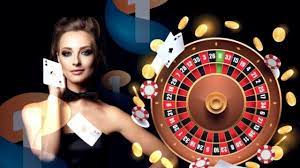Slot machines are a staple of casinos worldwide, capturing the hearts of millions with their vibrant lights, enticing sounds, and the promise of life-changing jackpots. From the traditional one-armed bandits to modern video slots, these games have duatoto over the years, maintaining their popularity among both casual gamers and seasoned gamblers. In this article, we’ll explore the history of slot machines, how they work, and what makes them so appealing.
A Brief History of Slot Machines
The origin of slot machines dates back to the late 19th century. The first mechanical slot machine, known as the Liberty Bell, was invented by Charles Fey in 1895. This machine featured three spinning reels and five symbols: horseshoes, diamonds, spades, hearts, and a Liberty Bell. Players would pull a lever to spin the reels, and a winning combination would reward them with coins.
As technology progressed, slot machines began to incorporate more sophisticated mechanics and themes. The introduction of electromechanical machines in the 1960s allowed for more complex gameplay and the use of lights and sounds to enhance the gaming experience. By the 1970s, electronic slot machines became widely popular, paving the way for the digital revolution.
How Slot Machines Work
Modern slot machines operate using a random number generator (RNG), which ensures that each spin is entirely random and independent of previous spins. Here’s a basic breakdown of how they work:
- Random Number Generation: Each time a player presses the spin button, the RNG generates a random sequence of numbers. These numbers correspond to the symbols on the reels.
- Reel Simulation: The machine displays the symbols according to the generated numbers. If the symbols align in a winning combination, the machine calculates the payout based on the paytable.
- Paylines and Bets: Players can choose the number of paylines they wish to activate. A payline is a line across the reels that determines winning combinations. The more paylines activated, the higher the chances of winning, but the cost of each spin increases accordingly.
- Bonus Features: Many modern slot machines offer bonus features, such as free spins, multipliers, and interactive mini-games. These features enhance gameplay and provide additional opportunities for players to win.
The Appeal of Slot Machines
Several factors contribute to the widespread popularity of slot machines:
- Simplicity: Slot machines are easy to play, requiring no skill or strategy. This accessibility makes them appealing to a wide range of players, from beginners to experienced gamblers.
- Excitement and Anticipation: The thrill of spinning the reels and waiting for a winning combination creates a sense of excitement and anticipation. The bright lights, sound effects, and immersive themes further enhance the experience.
- Variety: With countless themes and styles, there is a slot machine to suit every player’s taste. From classic fruit machines to adventure-themed slots based on popular movies or TV shows, the variety keeps players engaged.
- Progressive Jackpots: Many slot machines feature progressive jackpots, which accumulate over time and can reach life-changing sums. The possibility of winning a massive jackpot is a significant draw for many players.
- Social Interaction: In modern casinos, slot machines often feature communal areas, allowing players to socialize while they play. Online casinos also offer social features, such as chat rooms and leaderboards, fostering a sense of community.
Conclusion
Slot machines have come a long way since their inception over a century ago. With their captivating designs, simple gameplay, and the potential for big wins, they continue to be a cornerstone of the gambling industry. Whether you’re a casual player looking for some entertainment or a serious gambler chasing a jackpot, slot machines offer an exhilarating experience that keeps players coming back for more.



